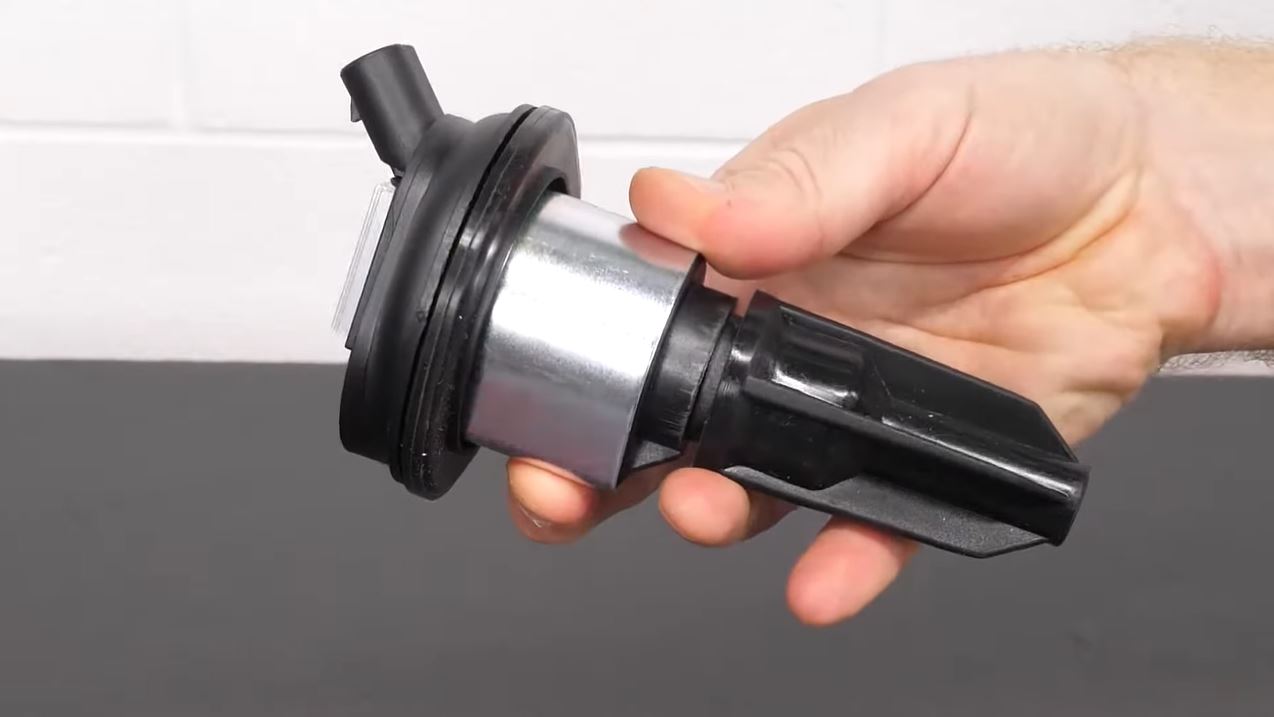
I’m a stock ignition coil user through and through because I’ve been getting the fastest and smoothest rides with it. But then I kept hearing about the performance ignition coil which is an aftermarket replacement for factory-installed coils and that made me curious. So my curiosity won and I got myself a performance ignition coil to see if it could outperform my regular stock coil.
What happened next? Well, let’s find out through this performance ignition coil vs stock coil comparison article.

What Are Ignition Coils?
Let’s start with the basics! The ignition coil is the most vital part of the vehicle’s engine system. Most modern ignition coils are installed on top of the spark plug.
Its job is to boost the 12-volt power of the vehicle’s battery and transform it into a much higher voltage output. If you do not have an ignition coil, the fuel inside the combustion chamber will not be able to ignite.
What makes the ignition coils perform in such a way is their two-wire design. The winding wire design is built in such a way as to ensure they can deal with higher voltage without any issue.
Performance Ignition Coil Vs Stock: What Are The Differences?
At first glance, it is hard to say that there are any differences between the Performance and Stock ignition coils as they have similar outer construction. But the primary difference between these two ignition coils is that the stock ignition coil mostly comes as a factory-installed system while the performance one is an aftermarket replacement. But here are some more differences that you should know about.
-
Voltage Level
The major difference between them is that one of them is known for creating a high voltage, while the other one is slightly low. Though the performance coil’s voltage level varies depending on the coil model, vehicle compatibility, and more, the voltage level can reach as high as 60,000 volts or more. However, I found that the stock coils do not make it beyond 40,000 to 45,000 volts.
-
Resistance
The best way to find out more about the coil’s quality is by testing the coil’s resistance with a multimeter. And here is what I did.
For that, I turned the resistance setting of the multimeter to Ohms. If you do that, you will find that the stock ignition gives a reading of 1.5 Ohms for primary resistance. On the contrary, the performance ignition coil gives a reading of about 1.2 Ohms. The secondary resistance test results are also different.
Though the resistance level seems low in the performance ignition coil, you should know that it means the coil will offer a higher voltage. With that resistance level, this ignition coil will charge up faster and offer a quicker kickstart than the stock coil.
-
Spark Level
To test the spark, I installed the coils on my bike to test them. While you can try installing them individually with spark plugs to test them, it is time-saving if you get an extra ignition harness and install them both at the same time to get a better idea. As for me, I chose the second option and the visual difference was noticeable when I tested them with my ECU.
I put them in 1.5-millisecond dwell to see what the sparks look like. While they both sparked in the same way, the performance ignition coil sparked a lot better once I turned it up to 2.5 milliseconds. I could even notice a change of color in the sparks. And as you dial up the dwell time, the performance ignition coil spark color turns up even brighter than the stock one.
-
Horsepower
You can clearly see by now that when it comes to specifications and power, both performance and stock ignition coils are quite different. With a comparatively low resistance to help with kick-start and a better spark, you automatically gain more horsepower with the performance ignition coil than the stock coil. I would say they would differ by at least 20 horsepower.
-
Cost
The prices of the ignition coils are also different with stock coils being more expensive. Judging by its construction quality, you can certainly expect it to be expensive. On the other hand, the performance ignition coil might not have a similar robust construction always but they are a lot cheaper. The only problem is the performance ignition coils are not as easily accessible as the stock ones, making the replacement expensive.
Performance Ignition Coil Vs Stock: Performance Comparison

Testing the ignition coils using equipment is one thing. But driving with them to test their actual performance can give you an entirely different idea and experience. And before I begin telling you how they performed, let me tell you that the ignition coil’s performance differs from vehicle to vehicle. So you might not get the same experience as I did but this will give you a good idea.
For this test, I took out my mini bike because it was lightweight and an easy piece to test something new. I started the first test with my regular stock ignition coil and started to test before moving to the performance coil by replacing the factory-installed one.
I tested both ignition coils at the speed rate of 0-30 MPH before trying them at top speed. And here is what I found.
Stock Ignition Coil
When I tried the stock coil, reaching 30 MPH took a bit less than 5 seconds. On the other hand, when I drove my mini bike at the top speed, it reached almost 62 MPH.
Performance Ignition Coil
It took me a little over 4 seconds to reach the expected target of 30 MPH. But when I tried it at top speed, the highest it could make it was around 58 MPH.

Pros And Cons Of Performance Ignition Coil
Pros
Cons
Pros And Cons Of Stock Ignition Coil
Pros
Cons
Final Verdict
The reason people tend to compare performance ignition coils vs stock is because they are always looking for a better alternative. While factory-installed stock coils are also durable and perform well for a long time, they do not last forever. In that case, the high-performance ignition coils work as a more suitable replacement. And for the price they come in, they certainly offer a satisfying performance for a long time.
Leave a Reply